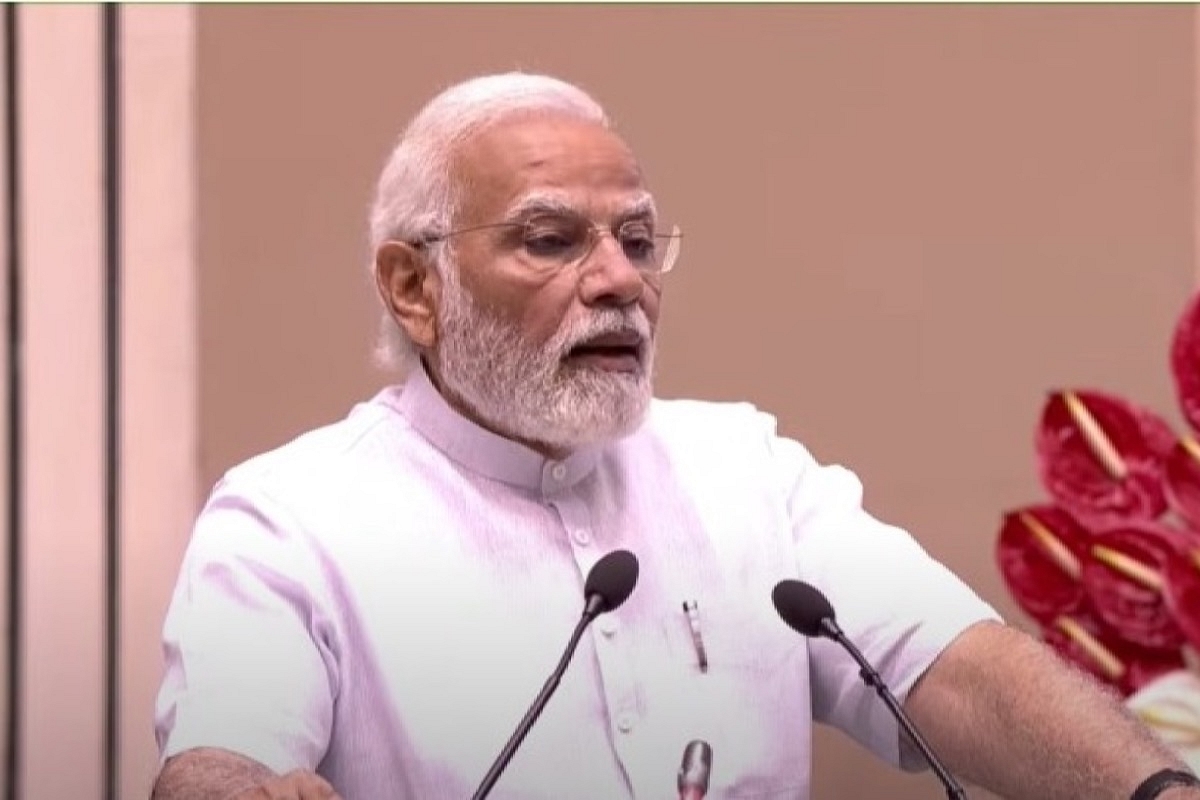Business
PM Modi Launches Rs 6,000 Crore 'RAMP' Scheme To Scale Up Implementation Capacity And Coverage Of MSMEs

PM Modi
Prime Minister Narendra Modi on Thursday (30 June) launched the Raising and Accelerating MSME Performance (RAMP) scheme with an outlay of around Rs 6,000 crore.
The scheme aims to scale up implementation capacity and coverage of Micro, Small and Medium Enterprises (MSMEs) in the states, with impact enhancement of existing MSME schemes.
PM Modi launched the scheme at the ‘Udyami Bharat’ programme at Vigyan Bhawan in New Delhi today (30 June).
The RAMP scheme will complement the 'Aatmanirbhar Bharat Abhiyan' by fostering innovation, encouraging ideation, incubating new business and entrepreneurship by developing quality standards, improving practices and processes, enhancing market access, deploying technological tools and Industry 4.0 to make MSMEs competitive and self-reliant, according to a PMO release.
Addressing the event, PM Modi said, "MSME sector accounts for almost one third of India's economy. The role of MSME is very significant for India's exports to increase".
To strengthen the MSME sector, in the last eight years, our government has increased the budget by more than 650 per cent, he said.
He emphasised that MSME is significant for maximum exports and is also highly important for maximum employment.
PM Modi added that for the government, MSME means - "Maximum Support to Micro Small and Medium Enterprises".
"For India's products to reach new markets, it is very important for the country's MSME sector to be strong Our government is taking decisions, making new policies keeping in mind your ability, limitless possibilities of this sector," he said.
PM Modi said that the vision of a 'Digital India' includes integrating technology with every aspect of government.
He urged the world to make use of opportunities in India and invest in the country.
Support Swarajya's 50 Ground Reports Project & Sponsor A Story
Every general election Swarajya does a 50 ground reports project.
Aimed only at serious readers and those who appreciate the nuances of political undercurrents, the project provides a sense of India's electoral landscape. As you know, these reports are produced after considerable investment of travel, time and effort on the ground.
This time too we've kicked off the project in style and have covered over 30 constituencies already. If you're someone who appreciates such work and have enjoyed our coverage please consider sponsoring a ground report for just Rs 2999 to Rs 19,999 - it goes a long way in helping us produce more quality reportage.
You can also back this project by becoming a subscriber for as little as Rs 999 - so do click on this links and choose a plan that suits you and back us.
Click below to contribute.
Latest